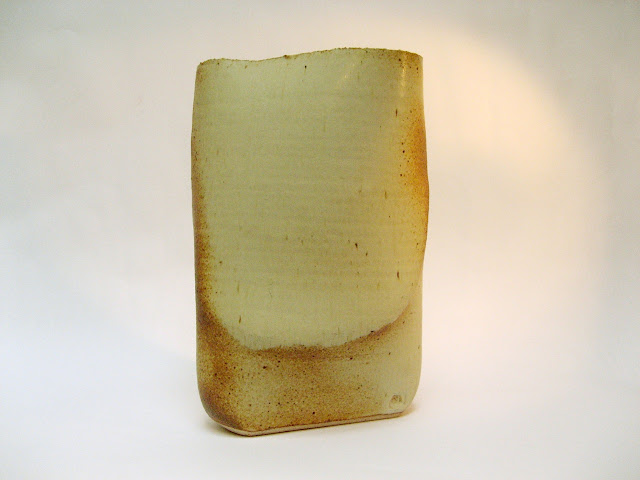Last weekend I presented a Zoom demonstration for the Ikebana International Melbourne Chapter. It was the first time we had used a live online format, which provided a challenge. The President, Julie Ireland, and Vice President, Nobuko Kobayashi, were in their respective homes in Melbourne and I was 100 kms away in Torquay. The event was to replace a workshop that could not be held due to the current Covid lockdown restrictions in Melbourne. Fortunately, I was able to use the room in which I normally hold my Torquay classes. The room has fairly good light and plain white walls with no background clutter.
Because of the season I chose the theme of "Spring flowers in a tall (nageire) vase". When I set the topic four weeks ago, I felt inspired because the Red Valerian, Centranthus ruber, in the garden was just starting to flower and the Freesias were prolific. A month later the Freesias were finished!
For my first arrangement I had decided to follow the Sogetsu curriculum exercise of "Flowers only". This means that branch materials cannot be used. This was just an extra level of constraint that I had imposed on myself, not upon the other Chapter members (including members from five other Schools).
I have attached the cross-bars to a vertical fixture that is set into a kenzan to stabilise it at the base. This method means that the cross-bars do not exert any pressure on the side walls of the vase.

I had prepared a second ikebana using only Australian native materials from the garden, all of which are technically branch materials. At this time of year the Bottlebrushes, Melaleuca, in particular, are flowering abundantly. They are a very popular garden and street tree/shrubs, widely planted because of their hardiness.
This pink is a (hybrid?) variety of Melaleuca viminalis.
This pale lemon one is, appropriately, Melaleuca pallida.
Elsewhere in the garden is a large coastal tea tree, Leptospermum laevigatum.
I also gathered some Black wattle, Acacia mearnsii, so that I had three different kinds of material for a feeling of spring abundance.
The vase is narrow, from the front to back, and has been irregularly pressed inward at the top. To secure the materials and keep the mouth of the vase uncluttered I created this cross-bar fixture with one long and three short bars. This enabled me to restrict the materials to a smaller section of the vase's mouth.
Photos of the members' ikebana on this theme can be seen on the Ikebana International Melbourne Chapter Instagram account.
Greetings from Christopher
16th October 2021











No comments:
Post a Comment